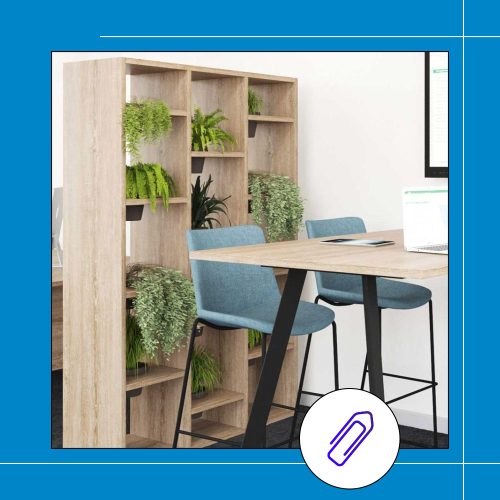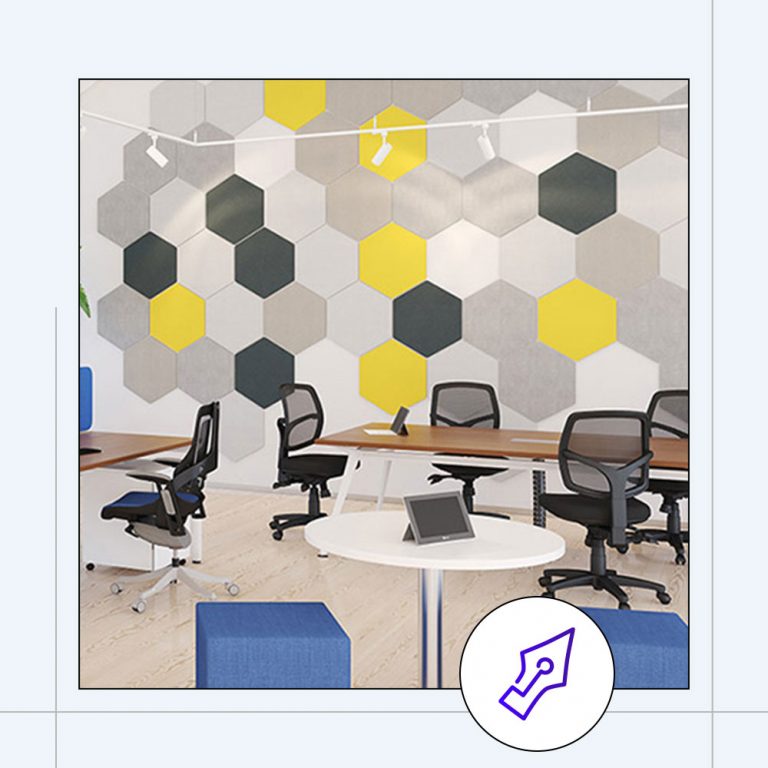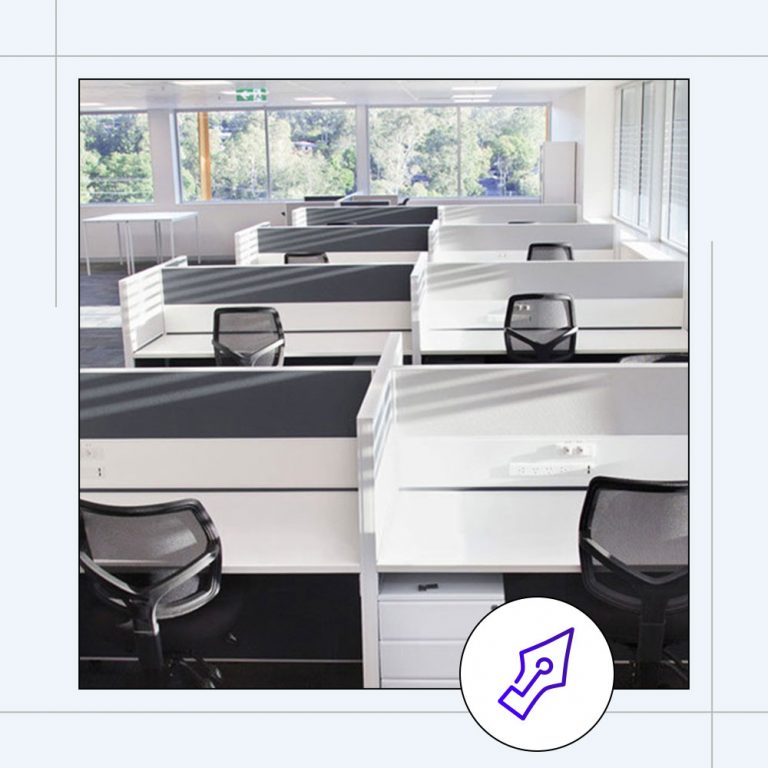With working from home now being such an important and achievable option, employers are searching for ways to create technology-enabled workspaces that are functional, engaging and connected. This is being made possible with today’s office furniture that blends modern style, comfort, conscious colour choices and seamlessly integrated technology.
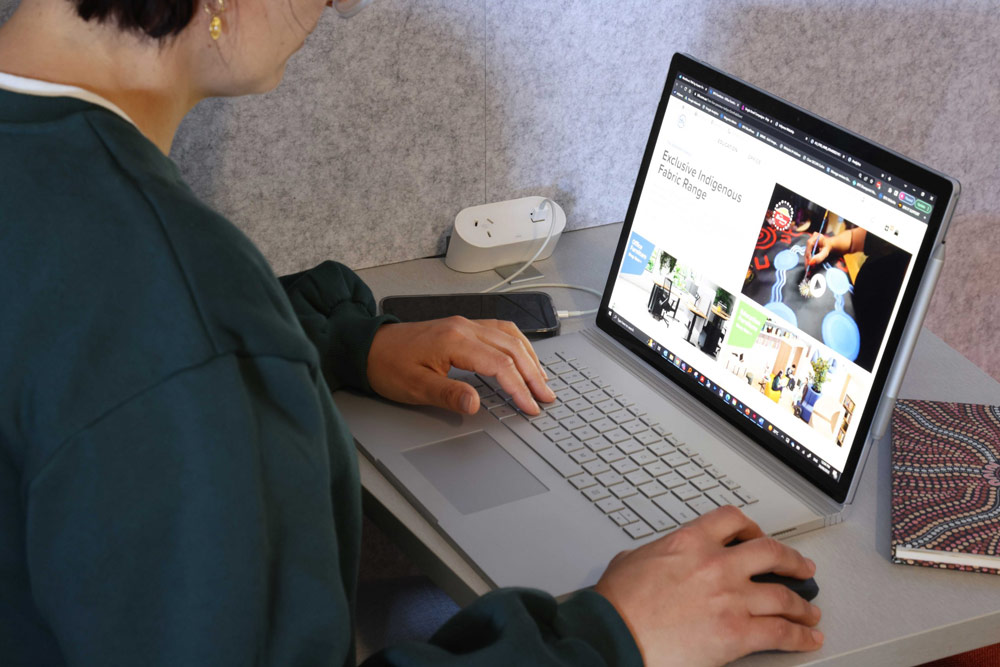
Technology as an inspiration for office furniture design
The continual evolution of business technology is, ironically, one of the few constants we can count on to push office space design forward. From the advent of the typewriter and office printing press, to WIFI and electronic whiteboards we’ve had to adapt our offices to facilitate new technology that, in theory, makes us more productive.
Together with changes in how we work together – cross-functional collaboration, hot-desking, Agile working, and now hybrid work from home/office arrangements – furniture now needs to offer more than a seat and flat surface: it needs to facilitate human connection.
Furniture should transform fluidly to facilitate larger group sessions, individual working, and quiet discussions, all the while keeping people connected to laptops, personal devices and collaboration technology. That means power and data access needs to be at people’s fingertips – not hidden under a table or unsafely connected across the room via tangle of extension cords and cables.
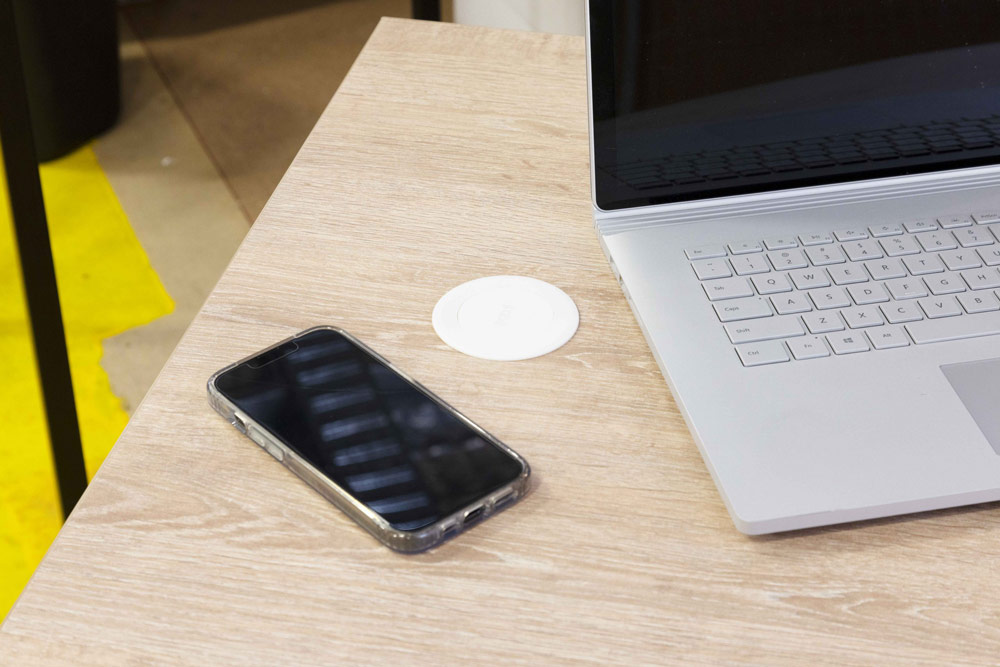
Where to integrate technology into furniture
Laptops, tablets, mobile phones, and wireless connectivity allow us to work individually or together anywhere, anytime. That flexibility calls for a rethink about where we provide access to technology. Consider these areas:
- Meeting spaces: boardroom tables, meeting tables, tiered meeting seating for large spaces
- Breakout areas: booths, bar tables, coffee tables, lounges
- Training rooms: lecterns, tiered meeting seating, tables, movable whiteboard/monitor display units
- Workspace: fixed and height adjustable desks and workstations, screened workstations
- Reception areas: reception counters, coffee tables and waiting room lounges
Types of technology that can be integrated in furniture
There’s a growing list of technology that can be seamlessly designed into the furniture you use in your office everyday:
- Power modules with traditional and USB charging outlets can be built into workstations, coffee tables, meeting tables and boardroom tables
- Wireless charging pads, LED lighting and Bluetooth speakers can be added to booths and tables
- Electric height adjustability can be added to create an ergonomic desk that flows from sitting to standing
- Monitors can be built into meeting tables and partitions to facilitate collaboration
- Cables and soft wiring can be concealed with channeling underneath desks and tables
In the not-too-distant future, you’ll also regularly see power points built into soft furniture like sofas and focus booths so you can plug your laptop in to your seat.
The benefits of tech-forward office furniture
Adaptable furniture with integrated technology is more than an office design trend or for the most innovative companies, it’s now an expected part of office life. In a 2018 study conducted by market insight firm Clutch, more than (53%) of workers surveyed valued the flexibility to work different locations, while 61% value a visually pleasing, comfortable workspace.
Furthermore, working from home during COVID-19 has only increased our need for a comfortable, inspiring, and convenient space that allows us to work as productively as possible. Research for job site Seek, revealed that half of all Australians expect more from their workplace now than before COVID-19 landed on our shores. This includes having a workspace that complements what they can have at home, with plenty of natural light, spaces to work with colleagues and get-away hubs for quiet work. Without these, employees will be tempted to decline a full-time in-office position in favour of those that offer them greater work-from-home flexibility.
Choosing furniture with integrated technology features can benefit your business through:
- Improved productivity: if staff are comfortable and able to work in different locations throughout the office easily (without wasting time setting up power cables and monitors) they’ll focus on getting the job done.
- Improved collaboration and creativity: being able to share and explain ideas in a visual way can rapidly speed up design or strategy development sessions, so furniture that combines a display (whiteboard or monitor) while hiding messy cords to keep the table free for printouts is crucial.
- Greater workforce flexibility: hybrid working arrangements, hot desking, freelancers and cross-functional teams are now the norm and allow businesses to create the right team for the right task easier than before. Integrating technology into furniture allows people to set up wherever and whenever they need to work with minimum of fuss.
- Improved employee wellbeing: for people who aren’t comfortable being at their desk all day, having the option to plug-in their laptop in a break-out area or quiet meeting room can be an important way to manage their mental health.
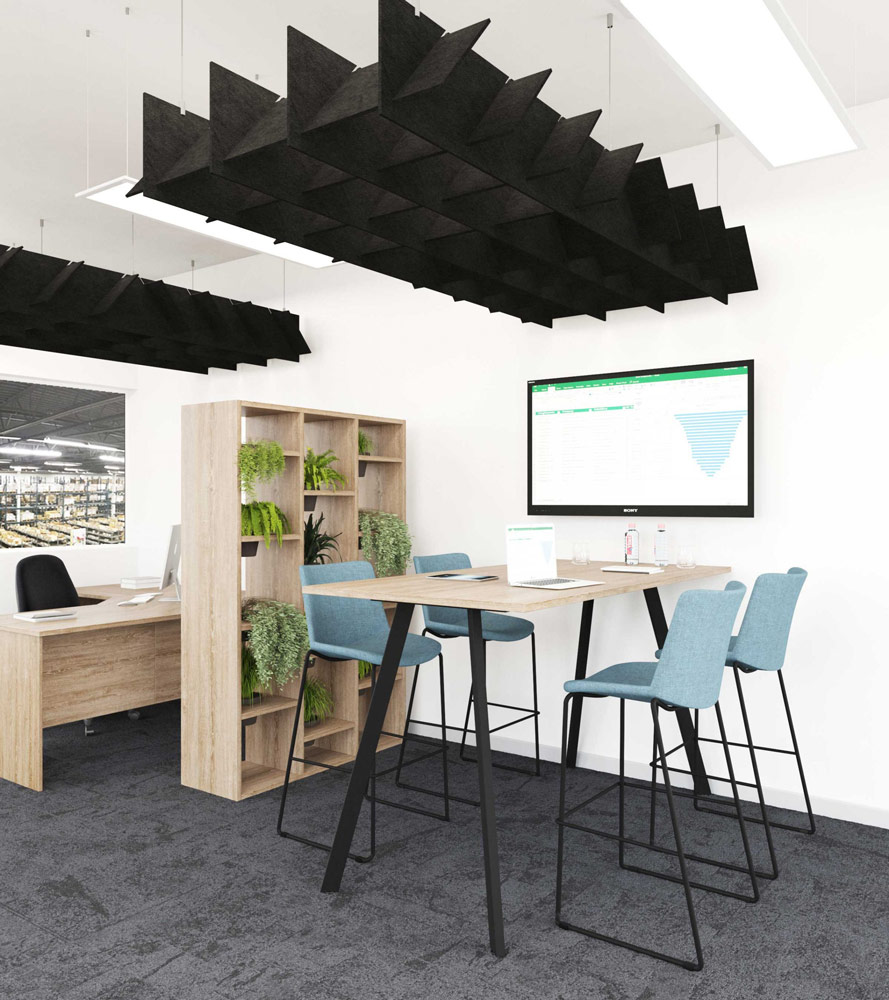
How to create an engaging workplace using technology
Creating an engaging office space that cleverly combines technology and furniture requires consultation, planning and some creativity.
- Think about the tasks that your employees perform every day and how they need to perform them: is their work primarily individual, or are meetings, training sessions and brain-storming sessions a big part of their day? If it’s the former, optimising individual workspaces with hidden cabling, charging pads and focus nooks with in-built power/data/USB points) might be your best option. If it’s the latter, consider making your workplace more dynamic by using movable partitions with in-built power and media displays together with reconfigurable seating systems that people can rearrange their space to suit their working styles.
- Consult with your staff about what they really need now, and a wish list that can be implemented over time. Make sure you bring the IT team into the conversation to ensure that this list is achievable from a technology perspective. This allows you to get creative with a floorplan and write an accurate brief for your office furniture supplier.
- Don’t forget the break room. Some of the best ideas happen when people are chatting over lunch or coffee, so make it an inviting space with a TV, power and USB charging points and wireless speakers so people can play music.
- Get your main conference and meeting room spaces set up. If you’re looking to reduce frustration and increase productivity, make sure that main meeting spaces have furniture with in-built technology that makes it easy to set-up, connect and go – quickly! Nothing disengages people more than a protracted start to a meeting or technology interruptions when a laptop dies.
The Final Word: It’s Time to Move Beyond Desks and Chairs
Furnishing your office is no longer about ensuring you have enough chairs and desks; it’s about facilitating seamless movement between collaborative and individual working modes with a clever use of technology. BFX Furniture can help you create an engaging environment that ticks the boxes both for employees that like to work individually, and who have returned to the office for much needed human interaction. We offer furniture that integrates power, data, displays and lighting and can be rearranged to bring people together, or give them the space to focus as individuals. Contact our team today.


